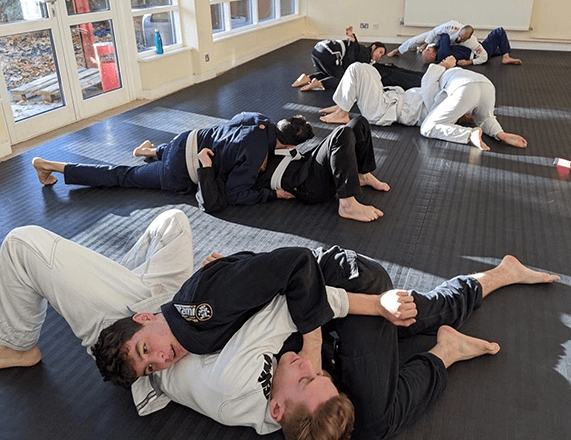In the dynamic world of Brazilian Jiu-Jitsu (BJJ), the pursuit of mastery often comes with the risk of injury. From minor strains to more serious sprains and fractures, practitioners must navigate a delicate balance between pushing their limits and safeguarding their well-being. To help you protect yourself on the mats, we explore the most common BJJ injuries and offer practical strategies for prevention.
One of the most prevalent injuries in BJJ is joint strain, particularly in the knees and elbows. These injuries often occur during intense grappling sessions or when executing takedowns and submissions. To mitigate the risk of joint strain, practitioners should prioritize proper warm-up and stretching routines before training. Additionally, focusing on technique over strength and tapping early during submissions can help prevent excessive stress on the joints.
Another common injury in BJJ is muscle sprains and strains, which can occur due to overexertion, improper technique, or inadequate conditioning. To minimize the risk of muscle injuries, practitioners should gradually increase the intensity of their training, allowing their bodies time to adapt to the demands of BJJ. Incorporating strength training and conditioning exercises specific to BJJ movements can also help improve muscular resilience and reduce the likelihood of injury.
Furthermore, neck and back injuries are prevalent among BJJ practitioners, often resulting from improper posture, repetitive movements, or sudden impacts. To protect the neck and spine, practitioners should focus on maintaining proper alignment during techniques and avoid putting excessive strain on these vulnerable areas. Strengthening the muscles surrounding the neck and spine through targeted exercises can also provide added stability and support.
In addition to physical injuries, BJJ practitioners are also susceptible to skin infections, such as ringworm and staph infections, due to close contact with training partners and shared equipment. To prevent skin infections, practitioners should prioritize hygiene by showering immediately after training, regularly washing their gear, and avoiding sharing towels or other personal items with others.
Moreover, overtraining syndrome is a common concern among dedicated BJJ practitioners, characterized by fatigue, decreased performance, and increased susceptibility to injury. To prevent overtraining, practitioners should incorporate rest days into their training schedule, prioritize adequate sleep and nutrition, and listen to their bodies’ signals of fatigue or burnout.
In conclusion, while BJJ injuries are an inherent risk of training, there are proactive steps practitioners can take to minimize their likelihood and severity. By prioritizing proper warm-up and stretching, focusing on technique over strength, maintaining good hygiene, and listening to their bodies, practitioners can safeguard their well-being and continue to enjoy the benefits of BJJ for years to come. So, train smart, train safe, and embark on your BJJ journey with confidence, knowing that you’re equipped to protect yourself on the mats.

